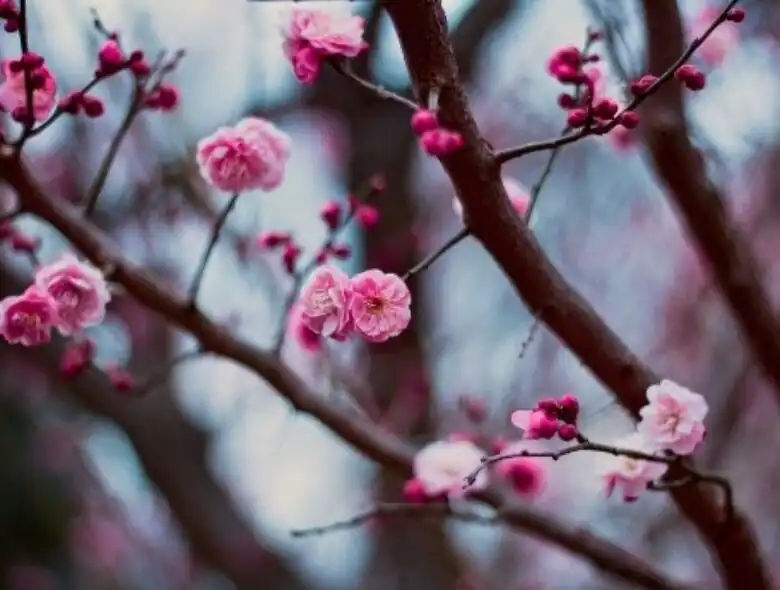Cherry blossoms get most of the attention, but the equally magical plum blossoms are one of the most stunning floral displays in this country! The plum blossoms last much longer than cherry blossoms and the vibrant colors are not to be missed!
Plum blossoms are particularly joyous since they symbolize the end of the cold winter and the beginning of a new season of blossoms. With the trees starting to bloom around mid-February (or even earlier!), now is a great time to get outside of your apartment and enjoy these first signs of spring, before soon cherry blossoms, and after that, all the summer flowers will be on their way too!
Below, we will discuss some of the best places to see plum blossoms, including Kairakuen Garden, Dazaifu Tenmangu Shrine, Atami Plum Garden, and more.
Kairakuen Garden (Ibaraki Prefecture)
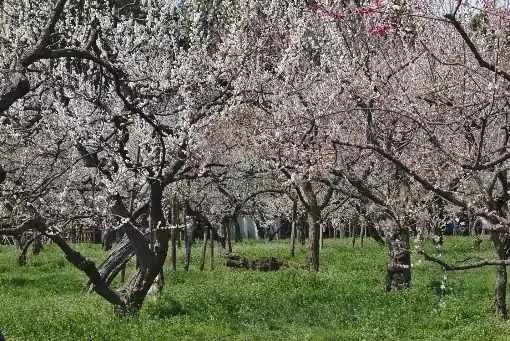
Located in Mito, in Ibaraki Prefecture, Kairakuen Garden is one of the city’s most beautiful spots year-round. However, from mid-February until late March, Kairakuen Garden is transformed into a sea of vibrant pink shades when the ume plum trees are blossoming.
There are over 100 varieties of plum blossoms, making up around 3000 trees in total. At Kairakuen Garden you can find a variety of shades of pink, red, and white blooms. The enormous park is also home to the Mito Plum Blossom Festival where locals and tourists gather to celebrate the coming of spring, bringing picnics to enjoy under the blossoms.
In addition, a plum wine festival, where you can taste plum wines from all over the country, and the birthday party of Mito City’s mascot character “Mito-chan” will be held as well. And if you visit at night, you will get a chance to see the plum blossoms lightened up.
Access/Entrance Fee
Take the JR Joban line to Mito Station. From there it is a 30-minute walk along Lake Senba or a 20-minute bus ride. The walk from the bus stop to Kairakuen Garden takes 2-5 minutes.
The entrance fee is 300 yen.
Atami Plum Garden (Shizuoka Prefecture)
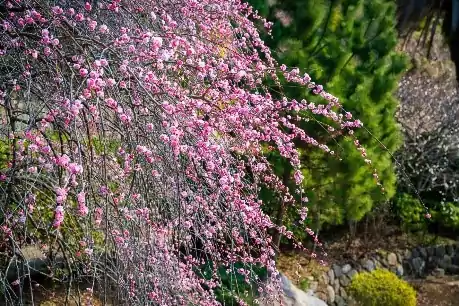
The popular hot spring resort town of Atami is home to the stunning Atami Baien Garden. The Atami Plum Garden was first opened in 1886 so that people could enjoy the beauty and tranquillity of the park after making use of the hot springs. The Atami Plum Garden is known for having the first blossoming plum trees of the season.
The early-blooming varieties blossom as early as the start of December. Nonetheless, there are later-blooming varieties at the Atami Plum Garden too. There are around 60 different varieties, making up approximately 500 plum blossom trees. The Atami Plum Garden also holds a plum blossom festival from early January through to early March when events such as concerts are being held, and visitors can enjoy various foods and foot baths.
Access/Entrance Fee
Atami Plum Garden is a 10-minute drive from JR Atami Station or a 10-minute walk from JR Kinomiya Station.
Admission is 300 yen (only during the period of the Plum Festival).
Yushima Tenmangu Shrine (Tokyo Prefecture)
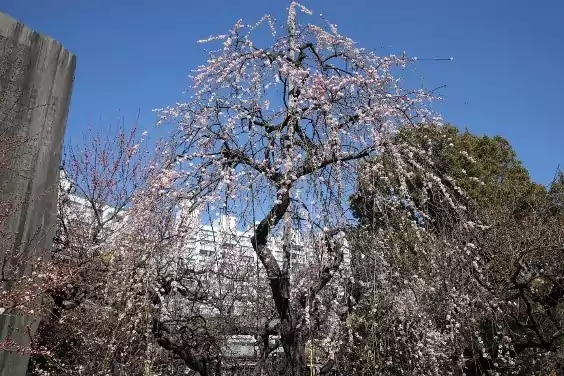
If you’re in Tokyo’s city center and looking for somewhere nearby to take in the plum blossoms, Yushima Tenmangu Shrine, Tokyo’s shrine southwest of Ueno Park is the place for you. Also known as Yushima Tenjin, the shrine is in the Bunkyo-ward of Tokyo.
The small Shinto shrine is a popular spot for locals and tourists from around the world. Yushima Tenmangu Shrine holds the Bunkyo Plum Blossom festival is held from early February to early March. Here you can enjoy product exhibitions, karaoke contests, taiko drum performances, and much more. Try some of the tasty snacks from the food stalls too!
Access
It is about a two-minute walk away from Yushima Station on the Tokyo Metro Chiyoda Line.
Free entry.
Suzuka Forest Garden (Mie Prefecture)
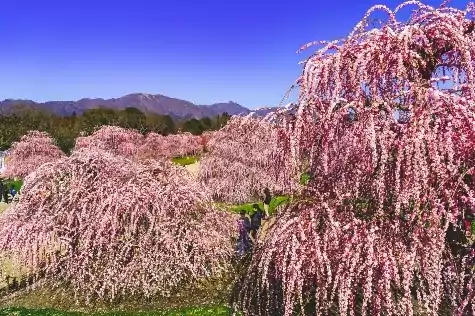
Suzuka Forest Garden is the best place for weeping plum blossoms, with around 200 weeping trees. It is best known for its dramatically shaped variety with a couple of trees that are over 100 years old. The trees at Suzuka Forest Garden are maintained by some of the most renowned Japanese masters of gardening.
If you enjoy mountain scenery, at Suzuka Forest Garden you can enjoy the sight of the plum blossom trees against a backdrop of the sometimes-snowy Suzuka mountains. The plum blossoms are also illuminated on some nights after sunset.
Access/Entrance Fee
You can get to Suzuka Forest Garden by taxi from JR Yokkaichi Station in about 30 minutes. During the Plum Festival, special buses that go directly to the gardens will be operated by Mie Kotsu.
The entrance fee is between 500 and 1700 yen (admission fee varies depending on the blooming situation).
Dazaifu Tenmangu Shrine (Fukuoka Prefecture)
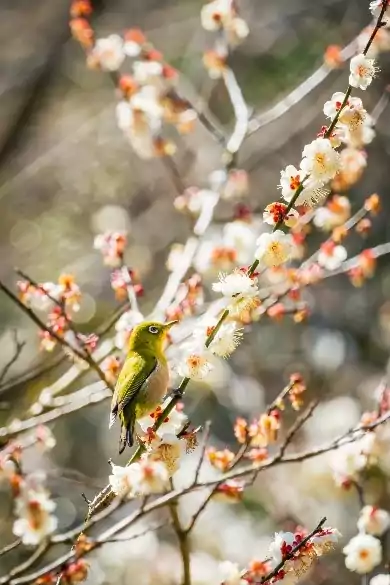
With over 6000 trees, Dazaifu Tenmangu Shrine is one of the most popular spots for enjoying the changing of seasons, and plum blossom season is no exception!
Dazaifu Tenmangu Shrine is one of the main Shinto shrines dedicated to Tenjin, built at the grave of Sugawara no Michizane. There is one particularly special tree called the “Tobiume”, the ‘flying plum tree’. The legend is that this tree couldn’t cope with being separated from Michizane, who dedicated various poems to his beloved plum trees. This special tree flew over to Fukuoka from Kyoto where it lives now.
A plum blossom ceremony is held each year towards the end of February. The enormous park at Dazaifu Tenmangu Shrine is a great spot for your first picnics of the year.
Access
From Hakata Station, you can get a bus that goes directly to Dazaifu Tenmangu Shrine.
Plum blossoms were first introduced to Japan from China and were the original hanami flower, representing the coming of spring and more gentle, warmer weather. They are the first sign of the end of the colder season, so they represent hope.
Since they are not as popular as cherry blossoms, plum blossom season is a great time to check out some of the more popular tourist destinations if you would like to see them in bloom. Furthermore, since plum blossom can be found in most parks or gardens, we suggest that you take the opportunity to enjoy a walk in the fresh air to take in the sight of any beautiful trees local to your Village House apartment.
Related articles:
- Top 5 Most Beautiful Hokkaido Flower Fields to Visit This Summer
- Sakura Season: Top 6 Spots for Cherry Blossoms in Shizuoka
- Top Cherry Blossom Spots in Hiroshima
- Best Places to View Cherry Blossoms
- 5 Japanese Spring Flowers You Need to See This Year


